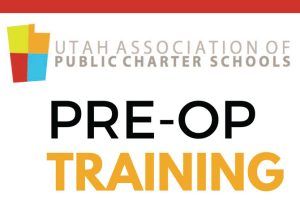All of public education wearies under the burden of never-ending reports. Today a new survey. Tomorrow an assurance. An update to the grants management system. Not to mention the mountain of reports and uploads from section staff and monitors and auditors. Especially at a charter school, these never-ending reports sap the director’s energy and creativity. Instead of being the school’s instructional and educational leader, they become automatons, pushing paper here and there.
School administrators must fill out these reports to demonstrate to the Legislature and the State Board of Education that they have spent the various streams of money in accordance with the restrictions on those streams of money. Based on extensive analysis of Utah’s many funding streams, it’s clear that policymakers place several different kinds of restrictions on how schools can use those funding streams. Some restrictions are relatively light, while others layer on top of each other, wringing innovation and energy out of our schools.
Kinds of Restrictions Policy Makers Impose
Use of funds spelled out
The most obvious restriction policymakers use is to tell schools exactly how they may spend the money. This money can ONLY be used to pay for computers or software. That money may only be used to pay paraprofessionals. You can give a bonus to these teachers, but not to those teachers.
The uses of funds spelled out by policymakers may be good ones. They may even reflect the same choices schools want to make. However, applying the restrictions means the school has to demonstrate that they have spent the money according to policymakers’ requirements. This flavor of restrictions often shows up in legislation, but may also be in rules adopted by the State Board of Education.
Matching requirements
Sometimes policymakers restrict how a school may spend money by requiring schools to match their state dollars with other local dollars. In theory, that matching requirement means the state stream of money is controlling other unrestricted funds, which means the director’s judgment about what is best for their school takes second place to the policy preferences of elected officials. Certainly, those officials mean well, but there is scant evidence to support the belief that they know better how to run a school than the school’s board and director.
Reimbursement requirements
Another way that policymakers restrict how schools can use funds is when the school can only receive the funds on a reimbursement basis. In other words, policymakers prescribe how a school can use the funds. Then to verify that they’ve done so per the policymakers’ expectations, the school must spend its own dollars first, demonstrate that they’ve already spent that money on approved items, and then the school can receive the flow of funds to pay for it.
Tied to a specific employee type
Sometimes policymakers tie a specific funding stream to a given type of employee. Sometimes the funding is only for a counselor, or a science teacher or a paraprofessional. In many cases, schools are going to want those kinds of employees. However, this kind of employee may not be the highest and best use at this school at this time for additional money. It would be better to allow the school’s director and board to evaluate what the most pressing staffing needs at the school are.
Monitor and reporting requirements
Another type of stringent restrictions is requiring schools to undergo specific monitoring, auditing or submit specific reports to verify whether the schools spent the funds as intended by policymakers. Inevitably this monitoring and reporting relies on questions of judgment, as each school is a little bit different. Too often, cookie-cutter evaluations of how to understand and use streams of funding fail to meet all the varied circumstances of schools, teachers and students.
Incorporated manuals
The community of policymakers and advocates who consider and comment on and suggest amendments to various rules sometimes joke about which rules are longest. Utah’s longest rules right now are all under 30 pages. However, that metric ignores the rules which incorporate additional manuals by reference. Those manuals often run 50, 100 even 300 pages in length. And those pages spell out even further, often in minute detail, exactly how a school can spend a given stream of funding. Those streams of funding are incredibly restricted.
Supplement vs. supplant
When policymakers impose some restrictions on how a school can use its funds, it’s not uncommon for at least some schools to already be using their own funds in similar ways. A not unreasonable response from those schools would be to free up unrestricted funding with the new restricted funding. However, in at least some cases, state-level restrictions prohibit that response. The new restricted funds can only add to or supplement what the school was doing; the new restricted funding can’t replace or supplant how the school was already spending its unrestricted dollars.
Of course, some schools may welcome the increased spending on that restricted line item. In their hierarchy of values and needs, additional money on that item or service may be ideal. But it’s equally plausible that a school has other more pressing needs, which the “supplement/supplant” restriction prevents them from meeting. And so we find ourselves again substituting the judgment of policymakers operating at 30,000 feet for the judgment of boards and directors who are on the ground level.
Recapture
Policymakers sometimes seem to care more about how schools use some restricted funds than others. One sign that they are particularly adamant about schools using funds only in pre-approved ways is a recapture requirement. When policymakers apply this restriction, schools have to return some funds not spent on the restricted uses, rather than being able to carry them forward to a future year. In some cases, that can mean the school must repay the state out of its own unrestricted funds, which obviously has significant budgetary impacts on the school.
Opt-in vs mandatory
Undoubtedly there are other ways policymakers restrict how schools can use the funds they provide. But for now, the last broad type of restriction to note is whether the restricted stream of funding is mandatory or optional. Sometimes policymakers believe that schools should be doing something, and use a stream of funding as an inducement. If you will do this, we will provide you some funding. In other cases, however, they are so adamant that a school provides this service that they require every school to take the funding and its accompanying restrictions.
Better Ways to Fund Schools
These kinds of restrictions play out in a couple of different ways. First, as schools construct budgets, directors and finance officers must follow those restrictions, and understand the consequences of accepting different streams of funding.
Second, we need to help policymakers understand that the reporting and paperwork burden schools face comes largely from the restrictions they place on how schools can use these funds. And it’s not just the restrictions that they have placed recently. Some streams of funding have been restricted for years, even decades. As a policymaker, it can be easy to forget them. But schools and teachers, and administrators have to bear the burden of those restrictions every day.
We want directors and aides and specialists and teachers to apply their expertise and creativity in serving the children in our schools, rather than allowing these restrictions to sap those educators’ energy because they have to force the restrictions on funding to match student needs.
Instead of multiplying restrictions on the funds schools receive, policymakers should be closely evaluating whether these restrictions accomplish what we want them to.
- Do these restrictions increase access to needed services or personnel?
- Do they increase student achievement?
- Which streams of funding really need to be restricted?
- Which restrictions should we be eliminating?
These are the questions the charter school community wants our policymakers to wrestle with.









